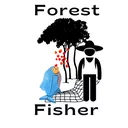ForestFisher
Priority areas for conservation and restoration of Amazonian forest-frugivorous fish interactions and associated fisheries

Partners
Partners
Federal University of Goiás
Education, Agriculture and Environment, Federal University of Amazonas
State University of Mato Grosso do Sul
Ação Ecológiga Guaporé
Research & Development, Brazilian National Monitoring Centre for Alters and Natural Disasters
Land Management, Technical University of Munich
Mountain Investigation, Polytechnic Institute of Bragança
Wildlife, Fisheries, and Aquaculture, Mississippi State University
Abstract
Abstract
The Amazon River Basin is the largest and most diverse drainage basin on the planet. The deforestation of Amazonian tropical forests to make way for crops and pastures has increased dramatically over the last decades, along with changes in climate parameters increasing the frequency of extreme hydrological events and droughts. Such changes coupled with the physical fragmentation of rivers are affecting distribution patterns, recruitment, and productivity of freshwater fish species, thus reducing a variety of livelihood options for fishing communities. Among Amazonian fishes, those with fruit-eating habits play a crucial role in maintaining forest diversity as seed dispersers and constitute a key source of food and income for traditional, local human populations. Increased deforestation, especially in riparian areas, has threatened this fundamental plant-animal interaction relevant to the maintenance of the biological and functional diversity of plant communities and ecosystems in lowland rivers. Important socio-economic impacts are to be expected because numerous frugivorous fish species are harvested by traditional riverine communities and support commercial fisheries. ForestFisher aims to integrate forest-fish interactions in the context of planning new protected areas, managing existing conservation networks, and designing restoration programmes in the Amazon River Basin.